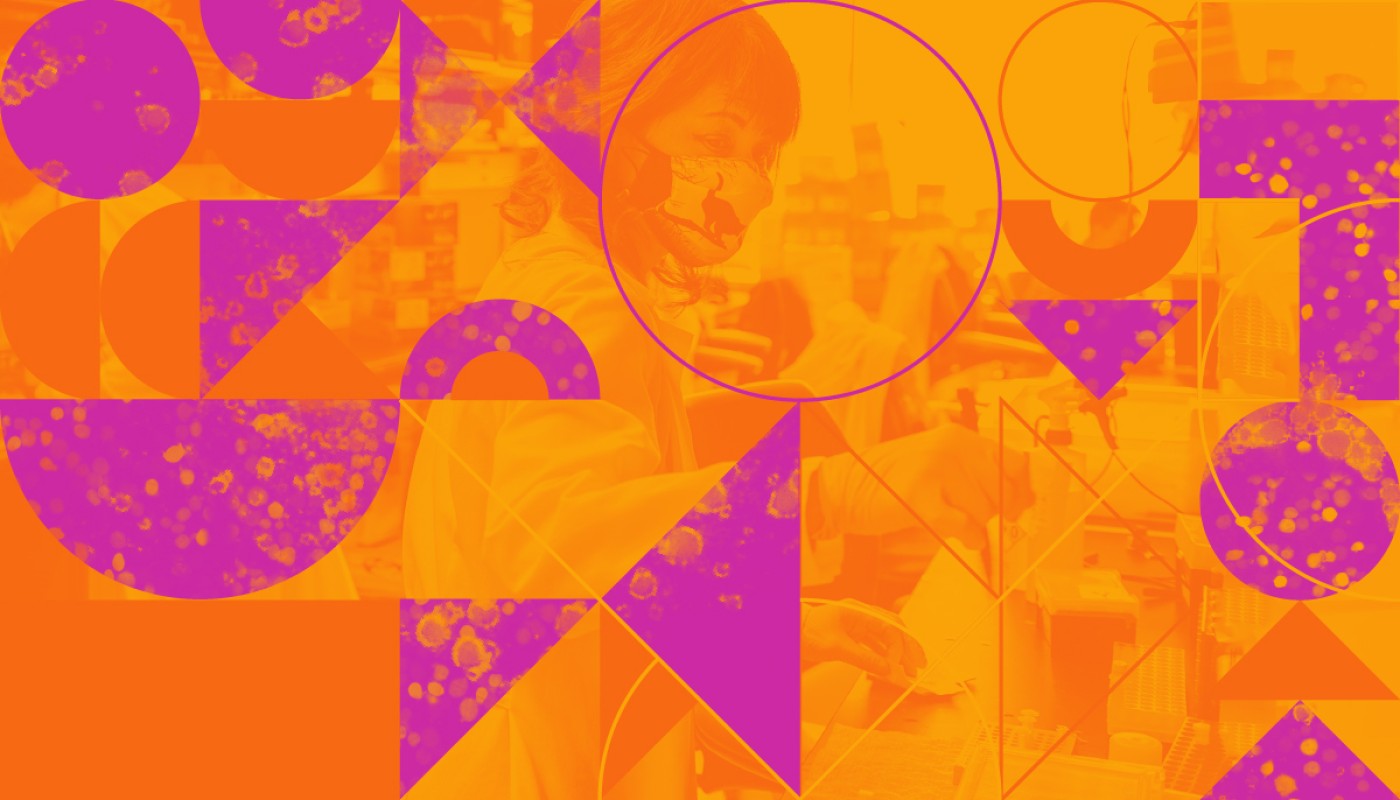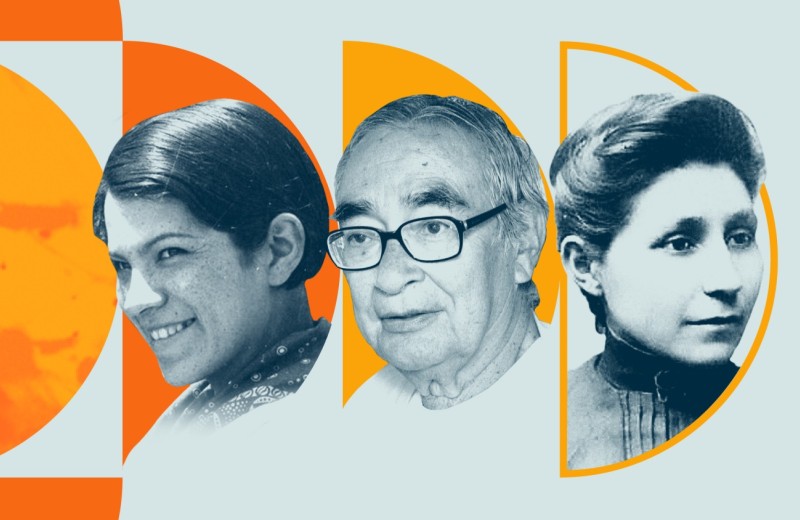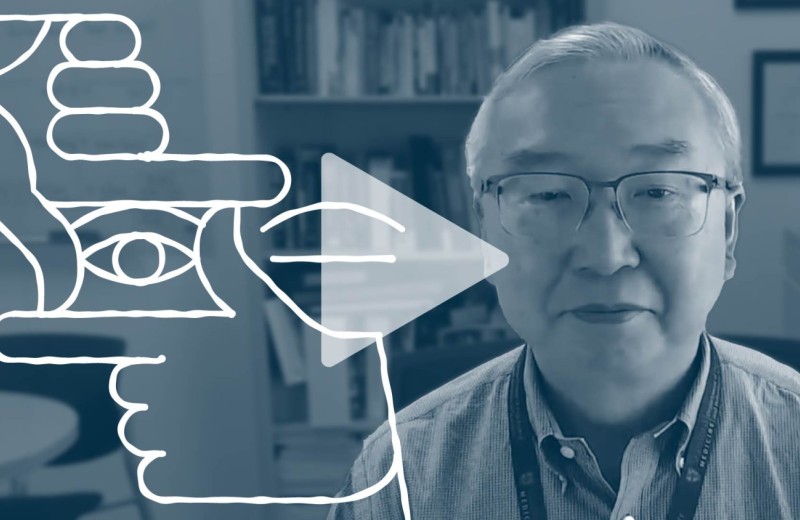Gladstone NOW: The Campaign Join Us on the Journey✕

If you walk into a science lab in the United States, you’re not likely to see much diversity. Odds are you will encounter no—or very few—people who identify as Black, Latinx, American Indian, or Pacific Islander. The same is true if you look at the organization’s leaders, where you’re also unlikely to see many women.
In fact, women and people of color are significantly underrepresented in the sciences, when you compare the number of individuals from these groups in the country’s overall workforce to the percentage employed in science, technology, engineering, and mathematics (STEM). They’re also impacted by disparities related to salary, grants, and promotions.
The entire scientific enterprise is suffering from this lack of diversity. We are collectively missing out on their perspectives and insights, and their unique solutions to problems we’re unable to solve.
“Data shows that scientific institutions do better science when they are more diverse,” says Byron Smith, PhD, a postdoctoral scholar at Gladstone Institutes. “Having a representative community greatly impacts our ability to do the most exciting and creative research.”
Smith is a member of Gladstone’s Postdoc Advisory Committee, a community group that drafted a series of recommendations in 2020 for improving the process of hiring postdocs in order to increase the racial diversity of that population at Gladstone.
“As social justice movements erupted across the country over the past year, it was clear there was increased awareness and the institutional desire to improve diversity,” says Smith.
This is true. In line with the strategic plan, Gladstone President Deepak Srivastava, MD, reaffirmed the organization’s long-term and sustained commitment to diversity, equity, and inclusion (DEI) efforts in June 2020. In his statement, one of the next steps he outlined was the development of a strategy to increase diversity in all scientific and non-scientific positions at Gladstone, as well as enhance efforts to cultivate an environment in which all people are valued and accepted.
After months of research and feedback from people at all levels of the organization, Gladstone launched its first DEI strategy, entitled Real Change Starts Now, in April 2021.
“A strategy turns our core values and vague goals into actionable items,” says Katie Pollard, PhD, director of the Gladstone Institute of Data Science and Biotechnology. “Just as we need plans, milestones, and progress reports when we do our science, we need a clear DEI roadmap to keep us accountable and make progress as rapidly as possible.”
Drawing Inspiration from the Internal Community
As a way of initiating the process, Gladstone began by defining what the terms “diversity,” “equity,” and “inclusion” mean to the internal community. Then, Gladstonians collaborated to articulate their vision and philosophy on these topics through the organization’s DEI statements.
Then, to craft a relevant DEI strategy, Gladstone leaders turned to community groups for their input and incorporated recommendations made by Smith and his fellow postdocs. They also drew knowledge and inspiration from various experts, including speakers who presented their views on DEI during the Critical Conversations and Amplified: Race and Reality in STEM event series.
“It’s very important for DEI goals and tactics to be transparent and agreed upon by everyone at Gladstone,” says Jasmine King, a graduate student who is involved in Elevated Voices, the community group dedicated to creating an inclusive culture for people of color within the organization. “Embarking on this initiative is critical for necessary change, and it is pivotal to incorporate the voices of minoritized groups in these decisions, as well as those of trainees, investigators, and administrators.”
“This needed to be a collaborative effort,” agrees Pollard, a member of the Executive Committee at Gladstone. “Every person will have different ideas based on their experiences, and I think many of the best contributions to the strategy came from members of our community in non-executive positions.”
A Roadmap to Making an Impact
After providing everyone at Gladstone with an opportunity to review and comment on early drafts, Gladstone’s leaders publicly released the DEI strategy.
This action plan is intended to drive every step of the process needed not only to increase the representation of minoritized groups at Gladstone, but also to ensure that every individual feels included and has access to resources and support to help them succeed.
“I appreciate the fact that Gladstone took a holistic approach and clearly put lot of thought into this strategy,” says Research Associate Arjun Kumar. “I want to see more organizations actively pursuing anti-racist initiatives. I’m happy that Gladstone is interested in working on these issues, and moving forward, I want to hold the organization accountable to fulfilling the promises it laid out.”
Gladstonians, like Kumar, recognize that the new DEI strategy is only the first step. Sustained efforts are crucial to make lasting change within the organization, and more broadly across STEM. And for this strategy to be successful, every individual at Gladstone must be held accountable for their actions, and inactions.
“It’s easy for institutions, especially right now, to talk a big talk,” says Smith. “It’s a lot harder to actually implement a plan—for that, we need the long-term will to be better. To make real headway, we need to hold our DEI efforts to the same standard that we hold our science.”
And that is the intention at Gladstone.
“Our DEI efforts need to become an integral part of what we do as an organization, and we will allocate time and resources to execute on our plan,” says Srivastava. “Improving DEI is an ongoing process, and we must remain honest about our achievements and setbacks, and closely track and report on our progress. These are key to holding ourselves accountable to the strategy we outlined and to truly making a difference.”
An Impact on STEM Fields, Young Scientists, and Society
The first goal of the DEI strategy is to increase the diversity of Gladstone’s internal community. This will not only enrich the organization’s culture, but will also bolster its scientific impact.
“Fundamentally, our science won’t be as good if we exclude potential contributors,” says Pollard. “We need to be more inclusive, period.”
But increasing the number of people at Gladstone from underrepresented groups in the sciences has many other benefits, too.
“It’s also important for the future,” Pollard adds. “We pride ourselves on being the best place for people to train, and to continue doing that, we need to provide role models to young people coming into STEM. If they’re excited about it but don’t see people who look like them at different levels and stages of career, that can be detrimental and cause them to leave their field. Role models were absolutely fundamental for me choosing to study math. I never would’ve done it if I hadn’t had a female professor in college.”
Kumar also points out the social impact of a diverse workforce in STEM.
“Science is a prestigious and relatively economically stable profession that comes with a certain amount of political and social power in the United States, and everyone should have the opportunity to work in science if they’re passionate about it,” he says. “I think diversity can be one readout of our progress toward equity, but at the end of the day, once we have all these different faces in the room, the true goals need to be, ‘Are these faces being valued in the same way?’ and ‘Are they being economically rewarded in the same way for their work?’”
This, in part, is why the other three overarching objectives in Gladstone’s DEI strategy focus on providing equitable opportunities for contribution and advancement, ensuring everyone feels included, and committing to an environment free of harassment.
“Diversity is important, but it cannot come without inclusion,” says King. “Increasing diversity in a non-inclusive environment is toxic, and inclusion stems from a space where everyone feels genuinely heard and seen.”
Taking the Next Steps
Gladstone still has work to do in order to achieve these goals. And while the organization works to recruit and retain more people from minoritized groups, it must also rely on internal community members who are DEI advocates.
“In many ways, by coming through institutions that could get me interviews for postdocs and faculty positions, I’ve benefited from the system as it currently stands,” says Smith. “That’s why I try to emulate some of the great role models I’ve had; folks who have advocated for those without the same privilege. And it’s not about charity, but making sure we can find the many talented people out there. I don’t want to miss out on those colleagues just because hiring processes are antiquated.”
For Pollard, being an advocate takes on a different meaning.
“It might be hard to believe because I have a successful scientific career and benefited from privilege in many ways, but I’ve often felt like an outsider in my career,” she says. “If you look back at the history of science, and of Gladstone, I don’t look like the typical person on the leadership team. As a woman, I just don’t. There are many challenges that come from feeling like one is not the center of the narrative.”
Thanks to the many internal community members who champion DEI efforts, Gladstone started taking initial steps in the right direction as the strategy was being drafted. One example is the launch of Embark, Gladstone’s Presidential Postdoctoral Program aimed to increase the representation of historically underrepresented groups at the postdoc level.
King is hopeful that initiatives such as this will have a positive impact on Gladstone, and their own experience.
“Increasing the number of Black scientists at Gladstone would be amazing in adding to my sense of belonging,” they say. “I wouldn’t need to go to an assigned meeting to find people who look like me; those encounters would come naturally, in passing. Imposter syndrome is real, and one key to breaking this down is increasing representation at all levels.”
Smith is also optimistic about Gladstone’s DEI efforts.
“I’m very excited about the Embark fellowship. It shows we’re willing to take that next step—beyond just saying we want to improve—by putting funding toward our commitment. This program will help us recruit scientific talent nationwide that otherwise might not have come to Gladstone.”
“As a small and agile institution, Gladstone has a huge opportunity to make meaningful change in a relatively short period of time,” adds Smith. “Overall, I’m thrilled that we now have a public strategy with a long list of tactics we can execute to actually do better.”
Want to Join the Team?
Our people are our most important asset. We offer a wide array of career opportunities both in our administrative offices and in our labs.
Explore CareersHighlighting Native American Scientists
Highlighting Native American Scientists
Learn more about these indigenous scientists who’ve made an impact on their fields
Communications DiversityNeurodiversity in the Workplace
Neurodiversity in the Workplace
Hear about the “Strengths-Based Model of Neurodiversity” and how it can help neurodiverse individuals be successful in finding employment and in maximizing their professional potential
Communications DiversityPUMAS Program Receives Five-Year Grant to Fuel Outreach, Diversify Science
PUMAS Program Receives Five-Year Grant to Fuel Outreach, Diversify Science
The impactful summer internship program, created at Gladstone Institutes, immerses select undergraduates in cutting-edge science
Postdoctoral and Graduate Student Education and Research Development Affairs Student Outreach and Science Education Institutional News Diversity



